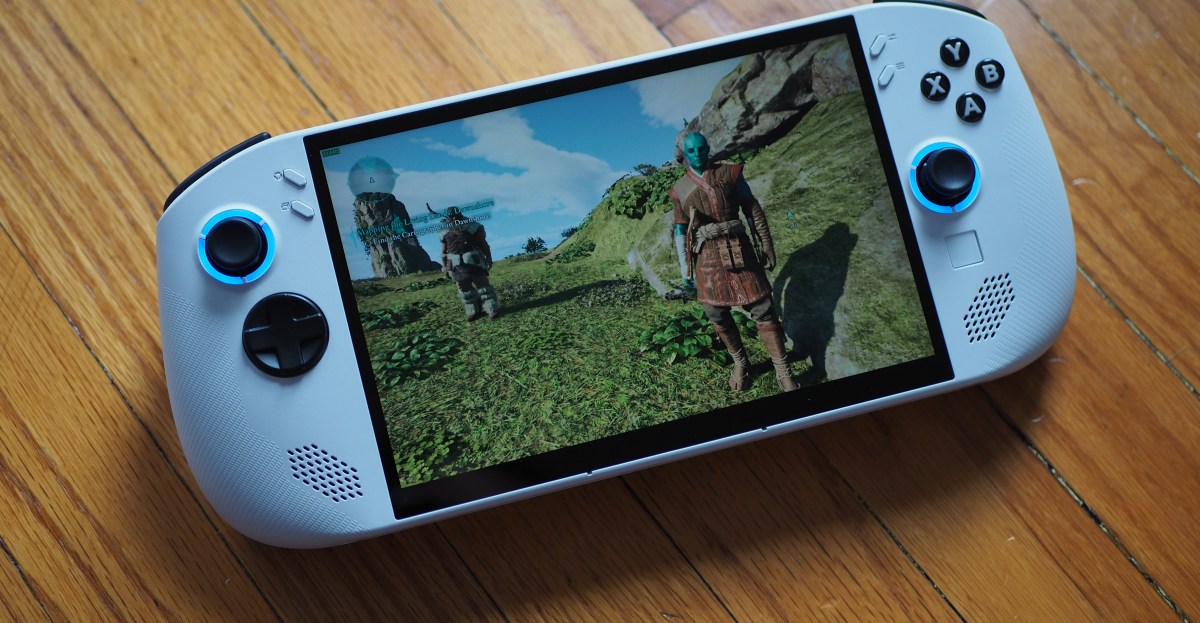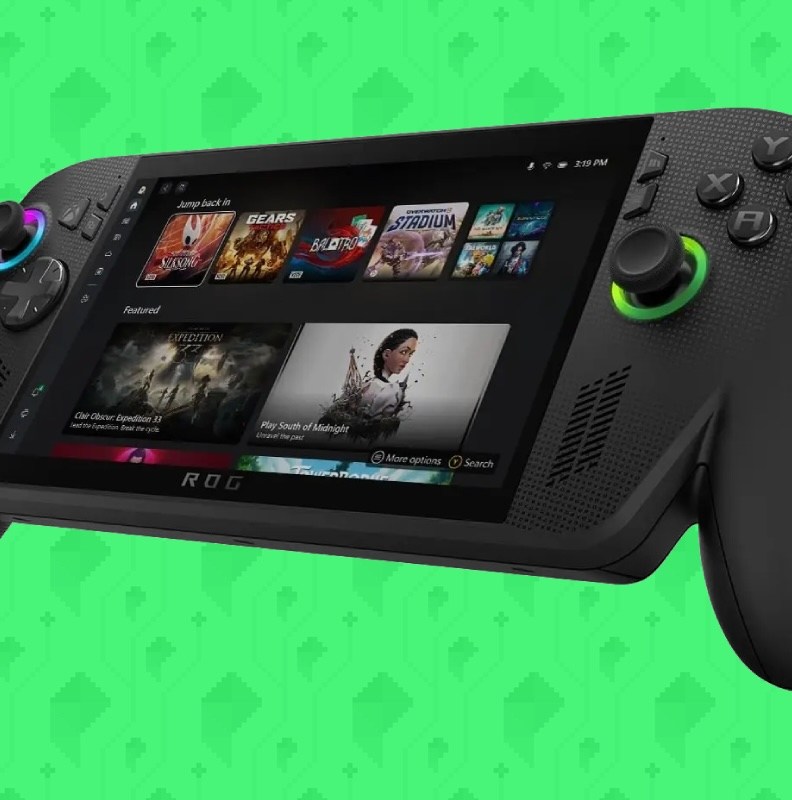## Handheld Heaven: Lenovo Legion Go S vs. Valve Steam Deck OLED – The Ultimate Showdown
Hold onto your controllers, gamers! The battle for handheld supremacy is heating up, and two titans are clashing in the arena: the Lenovo Legion Go S and the Valve Steam Deck OLED.
Both these beasts pack serious processing power, stunning visuals, and a library of incredible games, but which one reigns supreme? We’re diving deep into the nitty-gritty, comparing everything from performance and battery life to ergonomics and software, to help you choose the perfect portable powerhouse for your gaming needs. Get ready to unlock next-level handheld gaming, because the Legion Go S vs. Steam Deck OLED showdown is about to begin!Hardware Showdown: Performance and Power
Lenovo Legion Go S: Ryzen Z2 Go: Powerful but Questionable

The Lenovo Legion Go S is powered by AMD’s Ryzen Z2 Go processor, which is an entry-level processor in its generation. While it’s a powerful processor, its performance in demanding games has been a topic of debate. In our testing, we found that the Z2 Go processor struggled to maintain a smooth frame rate in graphically demanding games like Avowed, which rarely ran above 30 frames per second.
One of the main concerns with the Z2 Go processor is its limited core count. With only four cores and eight threads, it’s not as potent as other processors in its class. This limitation can be a significant issue in games that are heavily CPU-bound, like Avowed. In these cases, the game’s performance can be heavily dictated by the processor’s capabilities.
When compared to other handheld PCs on the market, the Lenovo Legion Go S’s performance is somewhat uneven. While it’s generally more powerful than the Steam Deck OLED, the gains in some games are not as apparent as we’d like. This is especially true in games that are heavily CPU-bound, like Avowed.

Steam Deck OLED: Zen 2 Powerhouse
The Steam Deck OLED, on the other hand, is powered by AMD’s Zen 2 processor, which is a more powerful and efficient processor than the Ryzen Z2 Go. The Zen 2 processor features eight cores and 16 threads, making it a more potent processor in its class.
One of the main advantages of the Zen 2 processor is its ability to handle a wide range of games. In our testing, we found that the Steam Deck OLED was able to run a variety of games smoothly, including graphically demanding titles like Doom (2016) and Metal Gear Solid 5: The Phantom Pain.
Another advantage of the Zen 2 processor is its ability to maintain a smooth frame rate in games that are CPU-bound. In these cases, the game’s performance can be heavily dictated by the processor’s capabilities, but the Zen 2 processor is able to handle the load with ease.
When compared to the Lenovo Legion Go S, the Steam Deck OLED’s performance is generally more consistent. While it may not be as powerful as the Go S in some games, it’s able to maintain a smooth frame rate in a wider range of titles.

Game Library & Ecosystem: Access is Everything
Steam Deck: The Open Road
The Steam Deck OLED has a vast library of games available through the Steam platform. With access to SteamOS, users can play a wide range of games, including PC titles and console exclusives.
One of the main advantages of the Steam Deck OLED is its compatibility with PC games. Through the use of Proton, Steam is able to run a wide range of PC games on the Deck, including those that are not natively compatible.
Proton is a compatibility layer that allows users to run PC games on the Deck. It’s a powerful tool that enables users to access a wide range of games that would otherwise be inaccessible.
Another advantage of the Steam Deck OLED is its access to the Steam Game Store. With a vast library of games available, users can browse and purchase games with ease.
Legion Go S: Windows’ Windows of Opportunity
The Lenovo Legion Go S, on the other hand, runs on Windows 11, which provides users with access to a wide range of games through the Windows Game Store and PC Game Pass.
One of the main advantages of the Legion Go S is its access to PC Game Pass. This subscription service provides users with access to a vast library of games, including new releases and classic titles.
Another advantage of the Legion Go S is its ability to run Windows games natively. This means that users can play PC games on the Go S without the need for a compatibility layer like Proton.
However, the Legion Go S also has some limitations when it comes to game compatibility. While it can run a wide range of PC games, it may not be compatible with all titles, especially those that require high-end graphics or complex physics.
Design and Features: Gaming on the Go
Steam Deck OLED: A Slight Revision
The Steam Deck OLED is a slight revision to the original Steam Deck. It’s a bit lighter, weighing just 1.41 pounds, but it measures 1.9 by 11.7 by 4.6 inches (HWD), same as the original.
Two analog sticks flank the screen’s left and right corners, while the square touchpads sit just underneath them. On top, you’ll find a USB-C port and headphone jack. Finally, there’s the microSD card slot at the bottom of the device.
One of the main advantages of the Steam Deck OLED is its screen. Slightly bigger, at 7.4 inches measured diagonally (compared with the 7-inch Steam Deck display), the new system swaps the IPS panel for an OLED one. These beefed-up screens surpass IPS and VA displays in color gamut, viewing angles, and power efficiency.
Lenovo Legion Go S: A More Ergonomic Design
The Lenovo Legion Go S is an iterative improvement on the Lenovo Legion Go. The original Legion Go measures 1.6 by 11.7 by 5.16 inches (HWD) and weighs 1.88 pounds, far bulkier and heavier than the Steam Deck OLED (1.41 pounds).
The Legion Go S cuts down on the original machine’s bloat, measuring 0.8 by 11.7 by 5 inches (HWD) and slimming down to 1.61 pounds. Lenovo’s Legion Go S has picked up Valve’s torch and made an even better Steam Deck.
One of the main advantages of the Legion Go S is its design. While it may not be as sleek as the Steam Deck OLED, it’s more ergonomic and comfortable to hold. The removable Joy-Con-like controllers of the original Legion Go have also been removed.
Conclusion
So, which handheld reigns supreme: the Lenovo Legion Go S or the Valve Steam Deck OLED? Both are powerhouse devices boasting impressive specs and features, catering to the growing demand for portable PC gaming. The Legion Go S, with its detachable controllers, traditional console-like design, and higher-resolution display, shines in terms of comfort and visual fidelity. The Steam Deck OLED, on the other hand, offers a more compact form factor, a larger library of compatible games, and the flexibility of Linux and its open-source ecosystem. Ultimately, the “best” choice comes down to individual preferences and priorities.
The ongoing rivalry between these two titans signifies a pivotal moment in gaming history. The handheld market is rapidly evolving, blurring the lines between consoles, PCs, and mobile gaming. This competition fuels innovation, pushing the boundaries of what’s possible in portable gaming and offering gamers unprecedented choice and freedom. As developers continue to optimize games for these platforms, we can expect even more immersive and captivating experiences on the go.
The future of gaming is undeniably portable, and these powerful handhelds are just the tip of the iceberg. This is a new era of accessibility and versatility, where your gaming library can literally fit in your pocket. The question isn’t just about which device wins the battle today, but rather which platform will shape the landscape of gaming for generations to come.